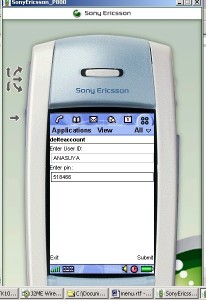Client Provisioning Project in Java Project Overview:
once, then deploying them anywhere. The challenge: How can functionality and data be provisioned from back-end applications maintained on servers to a constantly expanding base of wireless client devices? Meeting everyone’s needs requires a standardized framework that enables packaging content bundles and describing the device capabilities required by each, so users get the right content every time—automatically. Java™ Specification Request (JSR) 124— the Java 2 Platform, Enterprise Edition (J2EE™) Client Provisioning Specification—helps meet the challenge of this explosion in wireless computing.
Client Provisioning Project Introduction:
From the onset java had projected itself as an Internet language capable of providing reliable, robust, platform independent applications that would transcend the barriers of the Internet. To this end, java introduced developer friendly packages like Swing, AWT, Servlets, EJBs, JSPs to augment its power to easily develop web applications. These technologies have fared well and propelled java as the most suitable and reliable language to create web enabled high-end applications.
The advent of web services and Mobile devices has introduced a new twist to the field of distributed computing. Web services enable diverse applications to talk to and interoperate with each other. The increasing demand for mobile applications is opening a new era in distributed computing.
Java introduced technologies like JNLP (Refer article “Article on Java Web start”) to cater to this increasing demand, but plug and play applications and mobile applications are still premature. The J2EE client provisioning specification is one such attempt to provide plug and play applications especially for mobile and small devices.
This specification defines the rules to allow application servers conforming to the J2EE specification to host client services and applications that can be delivered to micro and mobile devices. The way this can be accomplished is with the aid of a provisioning server that would allow client devices to discover services advertised on the server. The chosen service can then be delivered to the device based on parameters like application type, client type, subscription status, etc. The service could be in the form of java bytecodes or jar files that would be downloaded on to the client machine and run on the client.
The target device could be any J2EE compliant device capable of handling J2EE applications. Presently services are targeted for Java Micro edition devices, MIDP clients and JNLP enabled desktop clients. More would be included as the specification gains acceptance in the industry.

